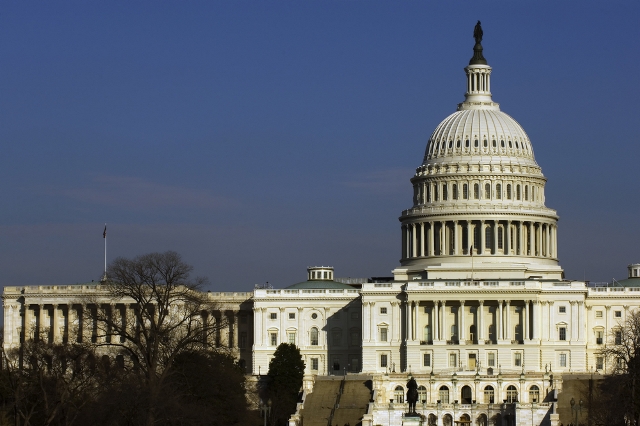 Eight Senators today released a “Bipartisan Framework for Comprehensive Immigration Reform” which proposes an overhaul of our legal immigration system while expanding border security measures and hardening current employment verification procedures. Most notably, the proposal would give unauthorized immigrants already in the country a chance to earn U.S. citizenship. Although the framework is only a very rough outline of what comprehensive immigration reform legislation might look like, the principles it espouses constitute an excellent starting point for the legislative negotiations that will now being in earnest. The Senators involved in the negotiations—Democrats Chuck Schumer (NY), Dick Durbin (IL), Bob Menendez (NJ), and Michael Bennet (CO); and Republicans John McCain (AZ), Marco Rubio (FL), Lindsey Graham (SC), and Jeff Flake (AZ)—outlined four “legislative pillars” for immigration reform:
Eight Senators today released a “Bipartisan Framework for Comprehensive Immigration Reform” which proposes an overhaul of our legal immigration system while expanding border security measures and hardening current employment verification procedures. Most notably, the proposal would give unauthorized immigrants already in the country a chance to earn U.S. citizenship. Although the framework is only a very rough outline of what comprehensive immigration reform legislation might look like, the principles it espouses constitute an excellent starting point for the legislative negotiations that will now being in earnest. The Senators involved in the negotiations—Democrats Chuck Schumer (NY), Dick Durbin (IL), Bob Menendez (NJ), and Michael Bennet (CO); and Republicans John McCain (AZ), Marco Rubio (FL), Lindsey Graham (SC), and Jeff Flake (AZ)—outlined four “legislative pillars” for immigration reform:
- Creating a pathway to U.S. citizenship for the 11 million unauthorized immigrants currently living in the United States. Implementation of this provision is “contingent upon our success in securing our borders and addressing visa overstays,” which leaves open the question of exactly how much enforcement will be deemed sufficient for a legalization program to begin. Nevertheless, unauthorized immigrants would first register with the federal government and receive “probationary legal status” if they pass a background check and pay a fine and back taxes. Once new enforcement measures are in place at the border and an entry-exit system has been created for the nation as a whole, immigrants with probationary status would be sent to the “back of the line” for a green card and, after that, U.S. citizenship. Because current backlogs for immigrants applying for family and employment based visas can cause delays of twenty years or more, the proposal also acknowledges a need to reduce existing backlogs. Backlog reduction and a more reasonable number of family and employment based visas will constitute an important, but as yet unknown part of the forthcoming legislation. Separate and less arduous pathways to citizenship would be created for unauthorized immigrants who came to this country as children (the DREAMers) and for unauthorized agricultural workers.
- Reforming the legal immigration system and attracting the “best and brightest.” Channels for legal immigration to the United States would be revamped so that they are more responsive to labor demand, especially at the high-skilled end of the occupational spectrum. Green cards would be given to foreign students who earn a graduate degree in science, engineering, technology, or mathematics from a U.S. university. In addition, backlogs would be reduced for both family-based and employment-based immigration applications.
- Strong employment verifications. A mandatory system of employment-eligibility verification that is capable of detecting identity fraud would be put in place to prevent future unauthorized immigrants from obtaining jobs in the United States.
- Admitting new workers and protecting workers’ rights. U.S. employers would be allowed to hire an immigrant if an American worker cannot be found to fill a position, within the context of strong labor protections for all workers, both immigrant and native-born.
It goes without saying that this framework for immigration reform will be attacked from both sides of the political spectrum. Some will say that its enforcement provisions are too stringent, others will say that its legalization provisions are too generous. Regardless, it is a good-faith effort to start serious talks on an enormously complex topic. The “legislative pillars” identified by the Senators attempt to effectively address the plight of unauthorized immigrants already in this country, while making the employment-based and family-based immigration systems flexible enough to forestall more unauthorized immigration in the future. In addition, the pillars seek to balance calls for heightened enforcement with demands for systemic reform. In the current political climate, this is no easy task.
FILED UNDER: E-Verify, future flow immigration, Immigration Law, immigration reform, pathway to citizenship, Republicans, STEM, undocumented immigration


